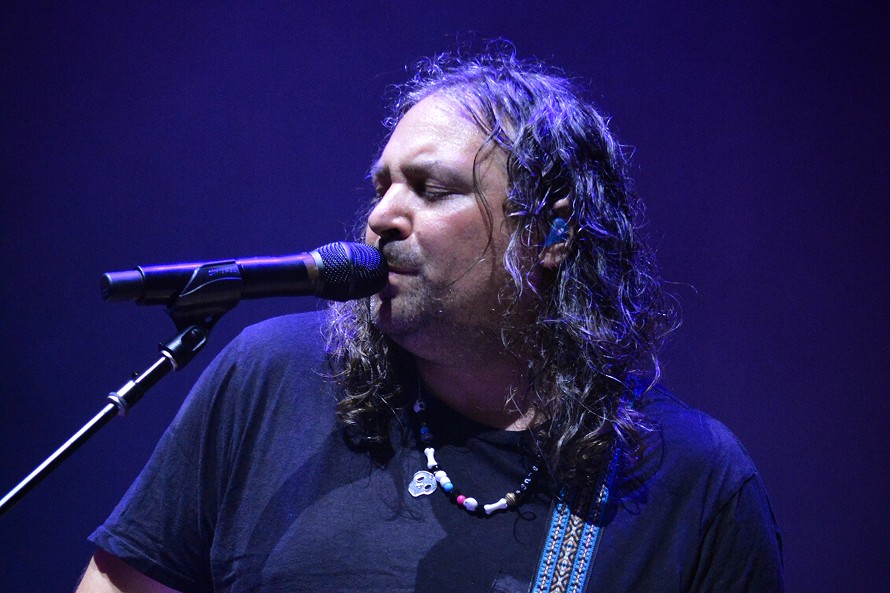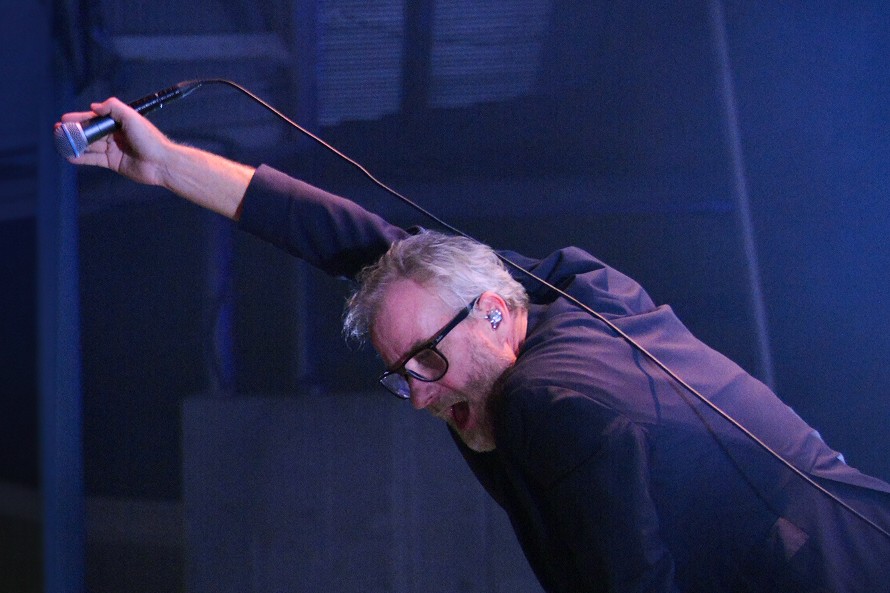The War on Drugs and the National Brought Polished Perfection and Chaotic Theatricality to Toronto │ Exclaim!

[ad_1]
The jokes write themselves. Basically anyone I’ve spoken with about the National’s tour with the War on Drugs has made a remark along the lines of “sad dads.” Technically, this is the Zen Diagram Tour, but I’m pretty sure not even the bands involved call it that. This is the Sad Dads Tour, and the National were even selling the T-shirts to prove it.
The irony is that neither of the headliners have been around for all that long. The War on Drugs released their first album in 2008, which puts them two years behind Taylor Swift’s debut, as a point of comparison. Both bands are arguably drawing bigger crowds and getting more critical praise than they ever have — particularly the War on Drugs, who are coming off 2021’s outstanding I Don’t Live Here Anymore and the new concert album Live Drugs Again.
The fact that the two bands shared equal billing as co-headliners proved to be a double-edged sword. On the one hand, each of them played a nice long set that could have served as its own stand-alone concert; on the other, this meant they had to start extremely early in order to finish ahead Budweiser Stage’s curfew, with the War on Drugs taking the stage at 7:30 p.m., with a lineup still outside the front gate and the seats half full at best. (Apologies to opener Lucius, who I only saw when they joined each of the headliners to sing a song.)
This meant that the War on Drugs’ set took a little while to build momentum, with mellow numbers like “Pain” and “I Don’t Wanna Wait” mostly serving as a soundtrack for arriving fans to line up for beer and find their seats.
But the seven-piece found their footing with the very “Baba O’Riley” keyboard pulse of “Harmonia’s Dream,” which came complete with a cosmic light show, sprucing up their usually understated stage lights. By the time they tore into the song’s cosmic heartland surge, the seats had mostly filled out, and bandleader Adam Granduciel’s Dylanesque yelps grew increasingly urgent as his energy matched the swelling crowd’s.
Things really lifted off late-set with “Under the Pressure.” The gloriously delayed gratification of its final verse, which exploded out of its extended ambient middle passage, was a true blow-the-roof-off climax, erasing any misgivings fans may have had about the performance’s slow start.
The War of Drugs haven’t released a new studio album since the last time they came to town in 2022, but they’ve flourished into a powerhouse live band with a show worthy of their meticulously arranged studio recordings. The impeccable finale of their back-heavy setlist, which ended on a high with “I Don’t Live Here Anymore” and “Red Eyes,” proved they’ve fixed the curious pacing of their last Toronto show.
Speaking of peculiar pacing, the National opened with the serenely sing-song ballad “Runaway” and a couple of cuts from last year’s First Two Pages of Frankenstein. Frontman Matt Berninger slunk around the stage, miming the lyrics as he croaked them in a well-worn baritone, looking disheveled yet debonair with a blazer over his IDLES T-shirt — a nod to the fact that the British post-punks were playing the same night just minutes away at Coca-Cola Coliseum.
Berninger was flanked by the Dessners, Aaron and Bryce, who are identical twins and dressed so similarly that it almost seemed like they were doing it as a bit, wearing caps over their mid-length hair, blazers over T-shirts, and even playing identical guitars on many songs. Eventually, I figured out that Aaron was stage left, since he occasionally played the small upright piano at the back of the stage.
Speaking of brothers, the all-Devendorf rhythm section of drummer Bryan and bassist Scott constantly kept things surprising. Following the understated opening run of songs, things picked up with “Bloodbuzz Ohio” and “The System Only Dreams in Total Darkness,” with Bryan’s angular (sorry) syncopations elevating what would otherwise be fairly straightforward rock grooves.
But while the Dessners and Devendorfs (plus two horn players) brought refinement to the National’s stately sad-sack anthems, this show was really all about Berninger’s chaotic energy. It was almost like he was playing a game to see how far away he could get from the stage: throwing himself into the front row early on, venturing to the sides of the floor soon after that, and eventually scaling the 200 sections in the encore. His voice sounded a touch ragged — a staccato croak rather than the rich croon of the band’s studio work — adding to the sense of reckless abandon his brought to the night. The unfussy visuals, with banks of LEDs overhead and a screen showing glitchy, abstract live footage, kept the focus on the frontman, where it belongs.
Berninger gushed about how much fun they were having touring with the War on Drugs, adding, “They’re winning.” Huh, I wasn’t aware it was a competition — but if Berninger’s keeping score, then yes, the War on Drugs did indeed play a more refined set, bringing an ever-so-slightly tighter brand of moody throwback rock. If I could only see one of these bands again, it would be the War on Drugs.
But, as the night went from from polished perfection to unpredictable theatricality, it became clear that the War on Drugs and the National are an ideal touring pair, as much for their differences as their similarities.






